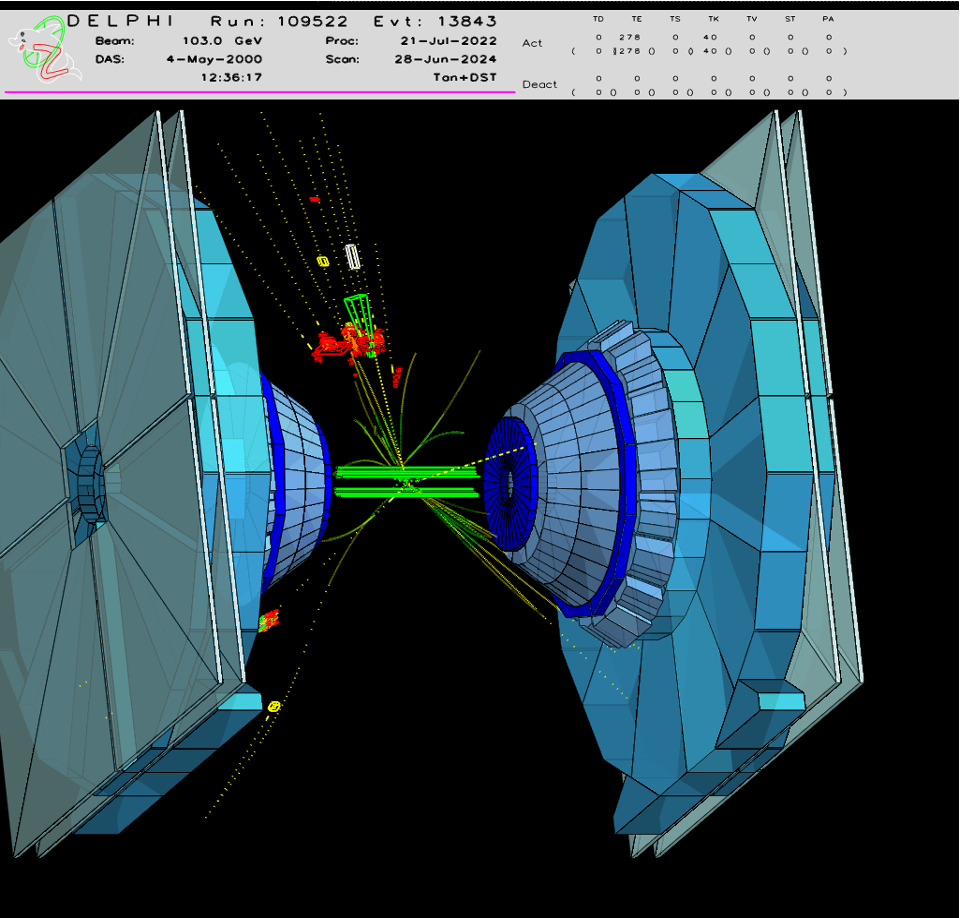
Collision data from the DELPHI experiment at the Large Electron Positron Collider. (Image: CERN)
Unlike letters carved on the Rosetta stone, digital data is not written on a virtually immutable support. Just a few years after it is written, its format becomes obsolete, the readout analysis tools can't run on computers and the visualisation code no longer works. But data can still contain interesting scientific information that should remain available to future generations of scientists.
A set of data of potentially high interest is that of LEP, CERN's former flagship accelerator that collided electrons and positrons up until 2000. Like the current LHC, LEP had four collision points, each hosting an experiment - ALEPH, DELPHI, OPAL and L3 - that was operated by hundreds of scientists. LEP holds the record for the world's highest e+e- energy collisions but the data collected over two decades ago remains available to only a small community of people.
Like archaeologists who unearth the remnants of past civilizations, digital archaeologists are computing experts who retrieve data years after the collaborations have moved on to other experiments. "The first step is to reach agreement within the collaboration as to opening and sharing their data and the software required to exploit it. Then, just like archaeologists, we dig into the documents that the former collaborations have written about the data architecture, and retrieve the software used for actual analysis", explains Ulrich Schwickerath, a former DELPHI physicist and computing expert working in the IT department. This is no easy task because the information often lies in unpublished documents or in private repositories that might have not even been shared within the collaboration.
The analysis software from LEP times was deposited in CERNLIB, a CERN-developed software library that was discontinued in 2003. "Shortly after the last release of CERNLIB, many external enthusiasts kept it alive and applied quick fixes to the software, known as patches. In a community-based effort, these patches were gathered together in order to create a community version, allowing the old software to be adapted to modern architectures," Ulrich explains. "Since then, together with a few LEP enthusiasts, we have managed to resurrect the software stacks of the DELPHI and OPAL experiments using the new community-driven version of CERNLIB. We are working towards making the dataset fully available in the original format, as compatible as possible with modern hardware and software tools, and to revise the old visualisation codes so that today's scientists can run proper analyses."
The data from ALEPH and DELPHI is now available, and the DELPHI data is shared on the CERN Open Data Portal. So whether you're a researcher, teacher, student or just an interested non-physicist, start your discovery of electron-positron annihilation data with the DELPHI detector by visiting this webpage.






